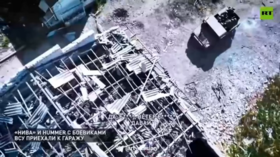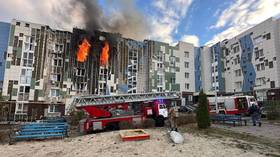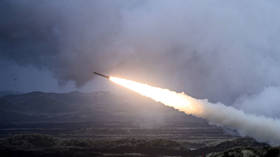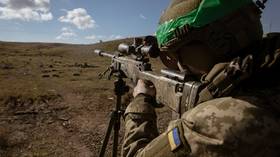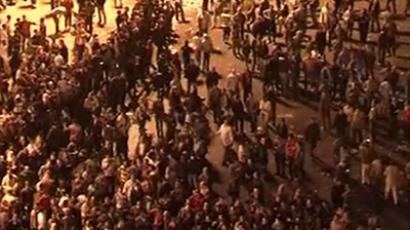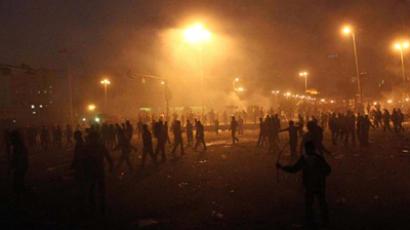Tahrir’s not for turning
Clashes in Cairo's Tahrir Square are continuing with police reportedly using a new type of tear gas against protesters. Thousands of Egyptians are demanding an immediate end to military rule in the country and have rejected any notion of compromise.
As tensions rise once more in Tahrir Square, a repeat of Tuesday’s violence seems all but inevitable, RT’s correspondent Paula Slier reports from the scene. Clashes have already broken out in Mohammed Mahmoud Street which links Tahrir Square with the Interior Ministry building.Clashes there are showing no sign of letting up, RT’s Paula Slier tweeted on her blog. Paula described the situation as “almost bizarre,” explaining that depending where you stand on the square, there is “almost a different reality unfolding.” In some parts of the square people are saying that they are not going to leave and are grimly determined to make their demands heard. At the same time in the other parts of it, there is an “almost carnival” atmosphere with people selling food and souvenirs. Police have been using a new and stronger type of tear gas which seems to temporarily blind its victims, Paula Slier says. Some of the gas canisters found littering the Square are marked “Made in Italy”.The demonstrators have brought water sprays with them to help neutralize the effects of the tear gas and doctors are reporting new types of injury from the vapor. The heavy-handed tactics being used by the police are just making people more angry and causing them to lose faith in the security forces.People's committees were appointed to maintain order in Tahrir Square after the protesters reached a ceasefire agreement with Egyptian security forces on Tuesday night. All security personnel have been withdrawn from the square and neighboring streets and replaced with civilian committees, Itar-Tass reports.A makeshift clinic has been set up on the Square and ambulances are rushing in and out while volunteer doctors tend to the injured. Thousands of people are arriving at the Square to join the hundreds already there. Paula says even more people are expected to arrive at Tahrir Square as evening approaches.The diehard protesters, who spent all night in Tahrir Square, reflect the general mood and sentiment of tens of thousands of people. They do not believe that their military rulers will hand over power and are unwilling to accept any promises made by the army.Late on Tuesday Egypt’s de-facto ruler, Field Marshal Mohamed Hussein Tantawi, made a televised address to the nation in which he accepted his government’s resignation and confirmed that the next president would be elected by the end of June 2012.Throughout his address, protesters in Tahrir Square showed their dissatisfaction with such half-measures with shouts of “No! No! Leave! Down with Tantawi! Leave!” according to RT’s Paula Slier, who has been reporting from the scene.People say they are not going anywhere until the army steps down. They have dismissed all promises and statements from Mohamed Hussein Tantawi and his cohort of generals who, according to the protesters, are merely addressing surface issues, proposing only “cosmetic changes” and offering nothing really fundamental.So far, every suggestion the military has put forward to satisfy protesters’ demands has been rejected. People say the current situation echoes the tactics used by the former Egyptian President Hosni Mubarack back in February in an attempt to remain in power.Besides the dedicated and tenacious protesters, the piles of litter and burned trash filling the square bear witness to the dramatic violence which has taken place there over the last few days, RT’s Paula Slier reports.According to the latest reports, at least 36 people were killed and some 2,000 wounded during days of fierce fighting between protesters and security forces. Medical staff at local hospitals say they have been unable to cope with the stream of casualties. Doctors have told RT’s correspondent at the scene that within the first two hours of violence on Tuesday they treated 500 people – approximately one person every five seconds.



